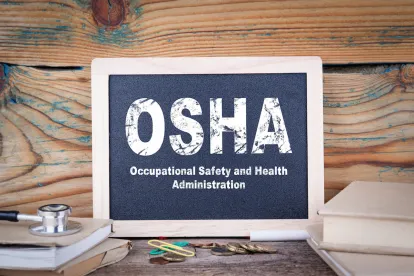On March 12, 2021, the Occupational Safety and Health Administration (OSHA) issued a National Emphasis Program (NEP) related to Coronavirus Disease 2019 (COVID-19). The purpose of the NEP is to ensure that “employees in high-hazard industries are protected from the hazard of contracting SARS-CoV-2”; the NEP directs OSHA to target worksites that have workers with increased potential exposure to this hazard. In addition, the NEP directs OSHA to ensure that workers are protected from retaliation for raising safety and health concerns related to COVID-19.
The NEP is in response to President Biden’s Jan. 21, 2021, executive order directing the secretary of labor to launch a national program to focus OSHA enforcement efforts related to COVID-19. The executive order also directs OSHA to assess whether to implement an emergency temporary standard (ETS) regarding COVID-19. To date, OSHA has not issued an ETS, but it may do so in the coming weeks. It is not yet known whether federal OSHA’s COVID-19 ETS will be similar to those created by state-plan states like California or Virginia. Regardless, it is unusual that OSHA would issue an NEP before a COVID-19-related ETS.
The NEP is effective immediately and requires that 5% of each OSHA region’s total inspections relate to COVID-19. OSHA-wide, this is approximately 1,600 total inspections.
NEP
The NEP directs OSHA to target high-hazard industries for programmed safety and health inspections. High-hazard industries include industries with NAICS codes having the highest number of OSHA-recorded fatalities, complaints, referrals, inspections, and COVID-19-related violations. This includes, among other industries, hospitals, health care providers, assisted living facilities, and home health care services. OSHA will also target non-health care employers for “workers who maintain critical business operations or would otherwise help to maintain a healthy work environment, and are likely to be at increased risk of exposure to COVID-19.” This includes employers with NAICS codes related to, among other industries, construction, energy, critical manufacturing, food and agriculture, and commercial facilities.
The NEP also directs OSHA to prioritize fatalities, complaints, and referrals related to COVID-19 for unprogrammed inspections. To this end, OSHA plans on paying particular attention to high-hazard industries as well as workplaces with high numbers of COVID-19-related complaints or known COVID-19 cases including correctional facilities, workplaces in critical industries located in communities with increasing rates of COVID-19, and workplaces where workers are in close contact to each other or the public (e.g., meatpacking plants, poultry processing facilities, and grocery stores).
After conducting either a programmed or an unprogrammed inspection, compliance officers and OSHA area directors must consider citing employers under existing OSHA standards or the general duty clause, Section 5(a)(1), for COVID-19-related safety hazards. “In the event that OSHA issues an emergency temporary standard, those provisions will take precedence over citations of the general duty clause.”
Employer Considerations
In response to the NEP, employers may wish to first consult the NEP’s appendices to determine whether OSHA considers their industry high-hazard and a target for a programmed on-site COVID-19-related inspection. If an employer is on either NEP appendix, the employer should consider reviewing all of its COVID-19 safety and health procedures to ensure worksites are complying with them and that the worksite is ready for an unannounced programmed COVID-19-related inspection.
Regardless of whether an employer is considered a high-hazard industry under the NEP, employers should review and update their COVID-19 safety documents, programs, and procedures consistent with Centers for Disease Control and Prevention guidelines and OSHA’s Jan. 29, 2021, COVID-19 guidance titled “Mitigating and Preventing the Spread of COVID-19 in the Workplace.” Employers should also assess their compliance with existing OSHA standards that relate to COVID-19 including standards related to: personal protective equipment, hazard assessments, respiratory protection, safety signage, access and exposure to medical records, and injury and illness recordkeeping and reporting.
Assessing COVID-19 policies and procedures now will give employers a head start in ensuring compliance with an ETS related to COVID-19.




 />i
/>i

